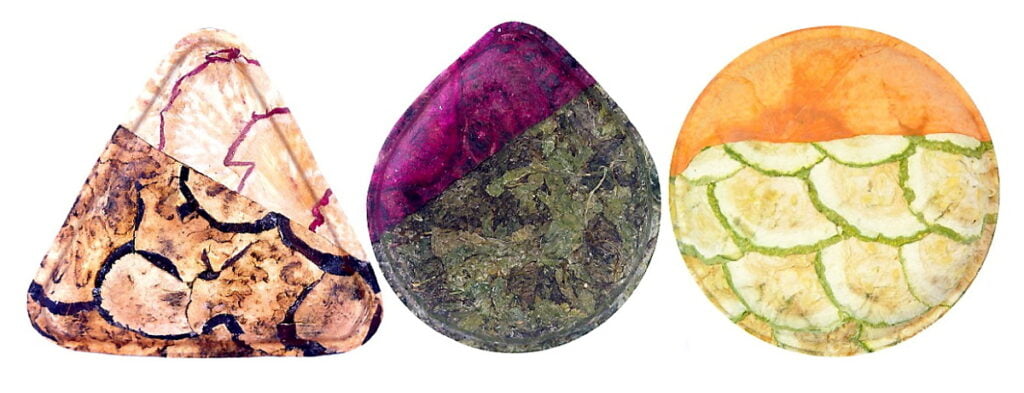Startup dries sliced pumpkin, carrot and eggplant into containers for ready meals
Ugly vegetables are being saved from the dumpster – and turned into artistic packaging for ready meals.
Thin slices of zucchini, pumpkin, carrot, eggplant and other veg are carefully dried into sheets, and shaped into edible containers.
They’re then sealed with a tasty vegan meal inside – such as pasta with cherry tomatoes and mushrooms, or rice noodles with carrots and cabbage.

Customers pop the finished product in a microwave for eight minutes, then tuck into the meal – plus the packaging which would otherwise have been trashed.
“We realized that between 30 to 50 per cent of all products in the Western world are going to waste and one of the most painful reasons for that was just because of how the vegetables and fruits looked, even though they were still full of nutrition and taste,” Esti Brantz, Co-founder and and Head of Impact & Creative at the Ashdod-based startup Anina tells NoCamels.

“I remember when I was in Norway going to the back of a supermarket building to the dumpster. And when I opened one, I found it was full of treasures.
“The fruits and vegetables were all fresh and good. I once found a dumpster full of pineapples. The leaves were brown, but the rest of the pineapple was perfect. It’s crazy,” she says.
The problem of waste runs deeper than the supermarket chains. “The supermarkets are not the only ones that are throwing food away. A lot of vegetables don’t even leave the farmer’s field,” she says. As many as half of all sweet potatoes can be left to rot in the ground because they’re misshapen.”
The principle behind the food capsules is straightforward, says Brantz who buys “waste” vegetables from the farmers. “We cut them down and dry them up, without adding any additional preservatives,” she says.
“Vegetables are made of 90 per cent of water. So when we dehydrate them, we can press them into a very thin paper-like shape called laminates. And these laminates are the raw material in Anina’s manufacturing.”
Sign up for our free weekly newsletter
SubscribeThe laminates are then molded into a 3D capsule that can be filled with other dried legumes, spices, grains, rice and pasta, with a shelf life of at least six months.

Customers put the capsule into a bowl of water in the microwave and wait for the ingredients to expand and mix into a ready-to-eat meal. “This reflects today’s appreciation for healthy food even though you lack time,” says Brantz.
Finding the right combination of taste, color and texture can be quite an endeavor, she says. “We have many factors that we must be aware of, especially the size. It’s hard to calculate how to press everything into a small format such that it remains tasty and ensure there is enough for a meal when it’s ready.”
Anina currently offers a Pasta Primavera Bowl (in a tomato capsule), a Vietnamese Bowl (in a carrot capsule), and a Mediterranean Bowl (in a zucchini capsule).
“We are always thinking about the aesthetic of the outside of the capsule laminate. In fact, we believe in a culinary experience that is fun and visually impressive. For us, it’s a way to give art to food,” says Brantz.
The company’s focus so far has been vegetables, but the aim now is to target fruit as well. “We know how to make the same laminates from fruit. The idea is to make a smaller capsule that looks like an energy bar. We already have many recipes,” says Brantz.

There are also plans to sell the laminates as they are, instead of molding them into capsule form. “You can get a whole sliced eggplant into a laminate format for instance. Instead of buying the fresh one you can store it in your closet since it’s very light and it’s very easy to transfer from place to place. And when you cook it from this flat form, it reverts back to the original slices with the original texture and taste,” she says.
Over the next five years Brantz wants the company to keep bringing new innovation to the industrial food world.
“We want to make people excited and happy about their food and give them the feeling that somebody has given a lot of thought to what they are eating. After all, we are what we eat,” she says.
Related posts

Israeli Medical Technologies That Could Change The World

Harnessing Our Own Bodies For Side Effect-Free Weight Loss

Missing Protein Could Unlock Treatment For Aggressive Lung Cancer




Facebook comments